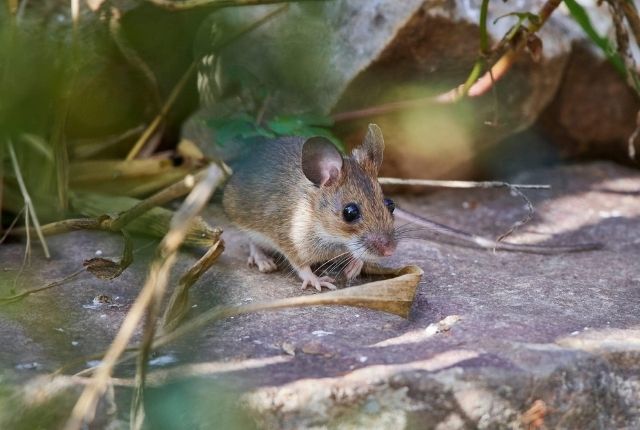Field mice are tiny greyish rodents with small ears, eyes, and a little tail. These rodents if left to invade a garden can cause considerable damage; by girdling root trunks, gnawing the bark of shrubs and trees and eventually killing your plants. Their patchy gnaw-marks are irregular and mostly seen near ground level. Mice are capable of wreaking great havoc on vegetables, bulbs and root crops in your garden. There are some mice control methods that can help you keep your garden mice free.
How to Control Mice and Mice Damage
To control mice infestation, modify your garden and take the following steps to reduce mice population and protect your plants. Here are some tips for mice habitat management:
- Tidy up the garden: Mice like to hide and nest in lawn debris and vegetation. Make the lawn less inviting to mice by keeping your yard weeded and mowed. Avoid using dense ground covers for planting.
- Fencing: Protect flower gardens and vegetables from mice by using 1/4″ or a smaller mesh fencing. The fence builds should be buried a foot deep to prevent burrowing.
- Wrap Trees: If mice are doing bark damage, surround the lower trunks of large shrubs and trees with a 1/4” wire mesh of loose cylinder. Bury it a few meters into the ground and during the winter time it should be above the snow line.
- Line Raised Bed: Use wire mesh to line raised beds before adding soil, this will keep burrowing creatures at bay. Also, ensure you plant bulbs in mesh cages.
- Create Buffer Zones: Mice tend to avoid open places and spaces. Incorporate a graveled or plowed buffer strip of at least 4” wide around orchards and vegetable gardens.
- Underground Barriers: Mice do not like to burrow through the coarse soil. Always surround individual plants and beds with a trench of coarse gravel.
- Keep Minimal mulch: Reduce the piling of mulch directly against shrubs and tree trunks to lessen mice temptation from munching and burrowing. It is good to create at least a 3’ diameter of cleared space around plants and trees.
- Till Garden: Tilling or plowing reduces the cover vegetation that harbors rodents such as mice.
- Encourage Predators: Foxes, Hawks, Owls and not to mention cats love to eat mice. Encouraging predators will not eliminate the mice population, but will help to keep it under control.
Mice Pest Control
- Poison: Rodent poisons are useful in killing mice. Precaution should be taken into account when placing poison outside. The poison can endanger other animals and if you must use it, use tamper-proof containers alternatively you may insert the bait directly into mice burrows in order to reduce exposure to other pets.
- Trapping: Household mouse traps can be used to catch mice in the garden. The best time to target mice is in the fall. You can put mouse traps directly in the mice runway or perpendicular to the track with the trigger facing the mouse’s path. Bait a live trap with peanut butter or diced apples to appeal to the mice. Always use traps with caution if you have children or people who use the yard.
- Repellents: Repellents such as sprays, smears, and ultrasonic devices may work, but have a limited success with stubborn mice. Also, repellents need to be frequently re-applied and changed for practical results.
- Fumigants: Mouse burrows tend to be shallow and have many openings. At times, this can render fumigating poisons ineffective.
Mice can wreak havoc on your garden. They can be a potential health threat due to the diseases they carry and spread around. Take preventive measures to control them before your garden gets infested with burrowing critters.

